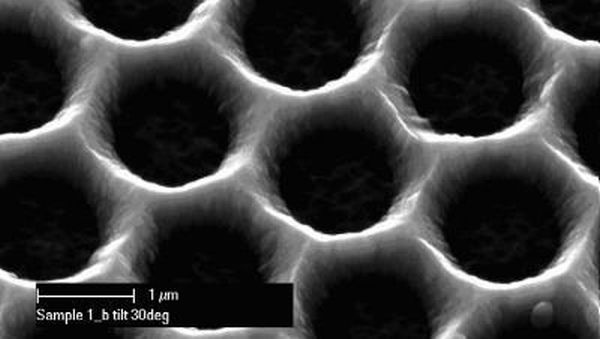
A fruitful collaboration between Oerlikon Solar in Switzerland and the Institute of Physics’ photovoltaic group at the Academy of Sciences of the Czech Republic has resulted in the development in a new type of energy efficient, thin film solar cell design. They consist of a nanostructured substrate, composed from an array of zinc oxide (ZnO) nanocolumns or, alternatively, from a “Swiss cheese” (as seen in the above image) honeycomb array of micro-holes or nano-holes. This advanced grade of substrate is integrated into the transparent conductive oxide layer (ZnO).
The ingenious design method utilizes optically thick cells for their high capacity of absorbing light, while the proximity between the electrodes is kept very close. This subsequently reduces the disadvantage of inefficient optical absorption due to thinness of other planar solar cells. As a matter of fact, the overall stable panel efficiency for these newly contrived low cost cells is just within the range (12-16 percent) of the efficiency of commercially dominant crystalline wafer-based silicon.
Nevertheless there is every chance of further enhancement of efficiency in the future for their inclusion into the commercial field. As Milan Vanecek, who heads the photovoltaic group at the Institute of Physics in Prague, explains:
Our new 3D design of solar cells relies on the mature, robust absorber deposition technology of plasma-enhanced chemical vapor deposition, which is a technology already used for amorphous silicon-based electronics produced for liquid crystal displays. We just added a new nanostructured substrate for the deposition of the solar cell.
Source: ScienceDaily




